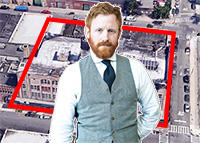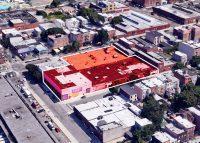Developers already see a major opportunity in Gowanus: a gentrifying, underbuilt area with good subway access.
Letting local NYCHA developments sell their air rights could make it even sweeter for builders and for public housing residents, and the two City Council members who must approve say they will consider it.
Read more



The idea was outlined in a report from the Pratt Center for Community Development, which argues that the city needs to broaden the Gowanus rezoning plan to include three local NYCHA developments: Gowanus Houses, Wyckoff Gardens and 572 Warren Street.
The report proposes that the city let these NYCHA properties sell air rights to developers and use that money for repairs.
“By excluding Gowanus NYCHA developments from the rezoning boundary, the city prevents NYCHA from directly benefiting from the land use action and therefore risks exacerbating the existing inequalities between residents of public housing and the community’s wealthier and whiter neighbors,” the study says.
City Council members Brad Lander and Steve Levin both represent the area that would be affected by the rezoning, and both maintain that the plan needs to benefit the public housing developments. However, while they see letting NYCHA sell its air rights as a way to accomplish this, they do not view it as the only way.
“The bottom line, as we’ve said all along, is that the Gowanus rezoning must contribute significantly to addressing dilapidated conditions in the nearby public housing,” said Lander, who ran the Pratt Center before entering politics. “This is one very good way of doing that. We remain open to other ways if City Hall wants to propose different kinds of connections or subsidies.”
Levin has a similar stance, according to his spokeswoman Nicole Hunt. He does think that the NYCHA developments should be included in the rezoning area, but he sees letting the agency sell its air rights as just one option.
Representatives from City Hall and NYCHA did not respond to requests for comment.
Elena Conte, deputy director at the Pratt Center, said the group’s proposal to let NYCHA sell air rights already had one distinct advantage over other options for improving public housing in Gowanus: it is actually a concrete plan.
“Whether it’s the best idea or not, it’s an actual idea,” she said, “so that, I think, distinguishes it from what’s on the table elsewhere, which is lip service.”
The Gowanus rezoning has yet to enter the city’s seven-month public review process, which concludes with a City Council vote that will hinge on Lander and Levin’s say-so. Gowanus, a low-lying area nestled between Park Slope and Carroll Gardens, has seen property values increase in recent years as it transitions from an industrial area to residential, and plans to clean up the Gowanus Canal have inched forward. The canal has been declared a Superfund site.
